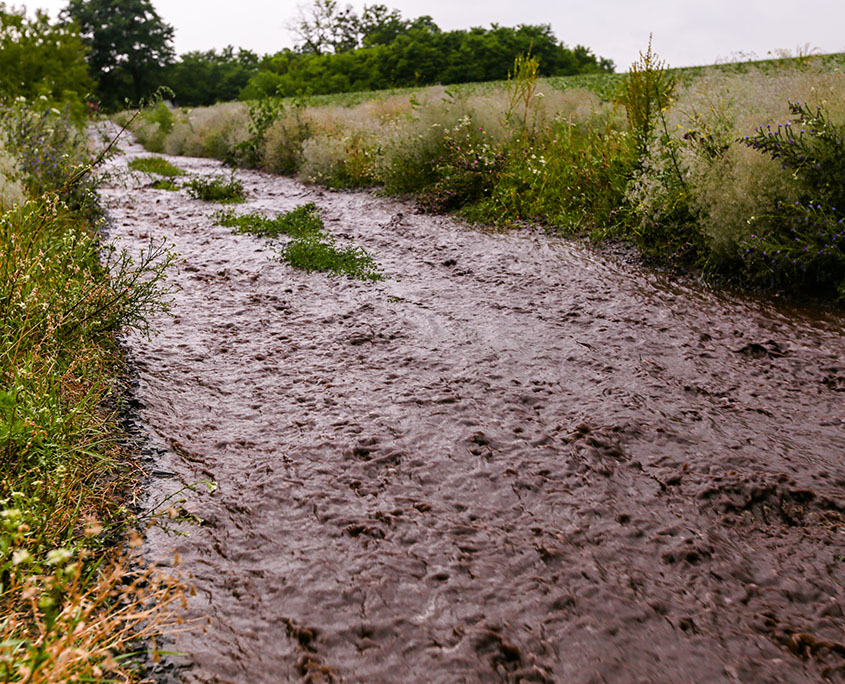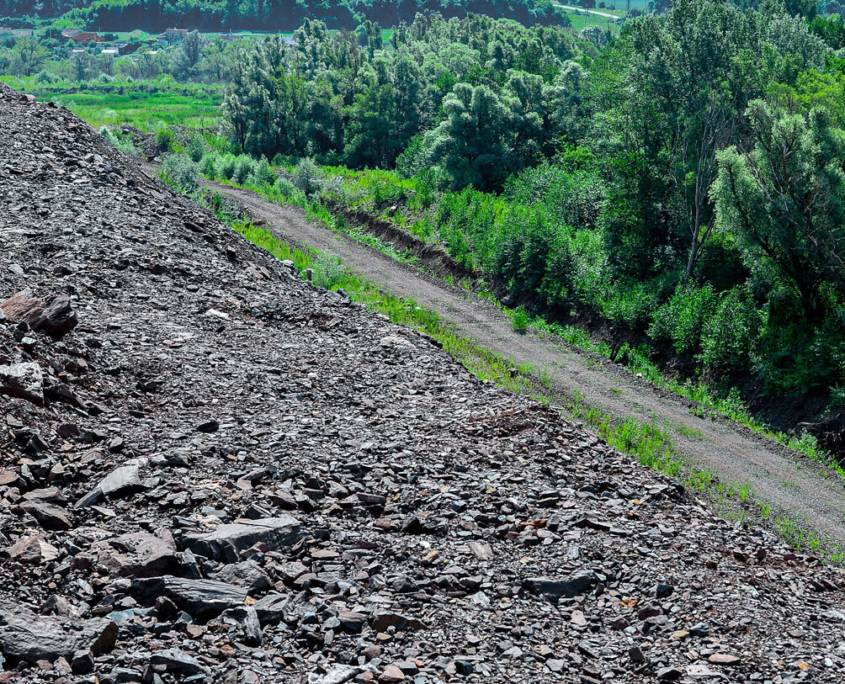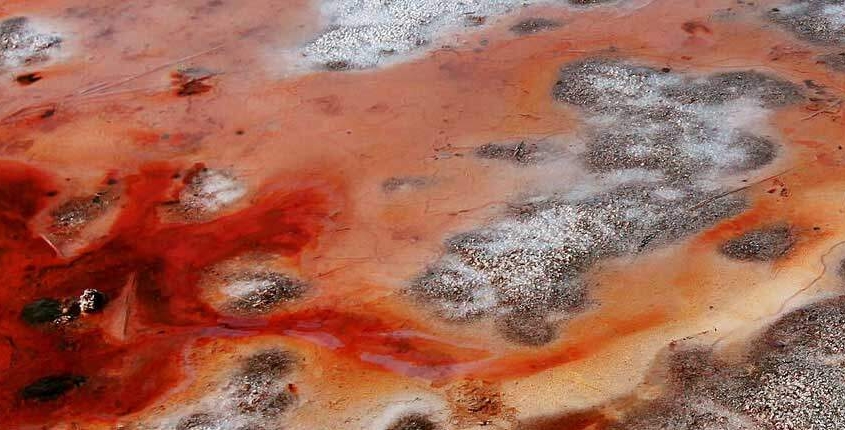Contaminated Mine Water Remediation
Environmental News
Financial Times Environmental News Feature
“Welsh Mines Leak at Least 500 Tonnes of Harmful Metals Each Year”
Environmental News
Remediation Schemes for Contaminated Mine Water Required throughout the UK
The recent Financial Times feature “Welsh Mines Leak at Least 500 Tonnes of Harmful Metals Each Year” highlights the issue of metal contamination from historical mining and the impact on our ecosystems and health.
The recent Financial Times feature “Welsh Mines Leak at Least 500 Tonnes of Harmful Metals Each Year” highlights the issue of metal contamination from historical mining and the impact on our ecosystems and health.
The article also raises the need for a detailed understanding of the contamination, especially where new residential developments are being planned.
The UK has more than 8,500 inactive metal mines of which 129 disused sites have been identified as causing problems to nearby rivers and streams. Wales has more than 1,300 abandoned metal mines, affecting more than 67 bodies of water and more than 370 miles (600km) of river.
Whilst many of the mines have been out of action for more than a century they are still leaking masses of metal pollution. Rainwater enters mine shafts or can soak through old spoil heaps, streams sometimes overflow into mines. Then the mine water seeps out potentially leaching out dangerous contaminants including lead, zinc, cadmium and copper.
At one site alone in Wales, Parys Mountain, on Anglesey, Natural Resources Wales (NRW) said 231 tonnes of metal pollution was leaking into the Irish Sea from an old copper mine every year.
Dealing with this historic issue of contaminated water and land in the UK is complicated. Whilst the Environment Agency and Natural Resources Wales (NRW) are liable for environmental water pollution from these mines, the local authorities have the responsibilities to identify contaminated land that could pose a risk to human health.
Government Estimates Show Scale of Pollution From Abandoned Sites
“We need to better understand how contaminants are transported in the environment and where they are stored. This allows us to assess hazards and to mitigate against them. Heavily contaminated flood-plain grasslands should not be used for livestock grazing, for example.”
As rivers flow downstream carrying sediments to new areas and flooding occurrences increase we need to extend our understanding of contaminated land and ensure development sites are tested. We need a thorough understanding of soil conditions on all our development sites especially where residential developments are being planned on previous brownfield sites or near historic mining.
Wales has more than 1,300 abandoned metal mines, affecting more than 67 bodies of water and more than 370 miles (600km) of river.
What are the issues of contaminated mine water?
Crops grown on contaminated soils, or irrigated by water contaminated by mine waste, have been shown to contain high concentrations of metals. These metals can accumulate in the food chain and cause serious risks to health. The contaminants from the mines travel with rainwater into streams and our water courses. As the streams and rivers flood, which we can regularly see happening, these metal contaminants can enter the surrounding soils and sediments. The crops and plants that grow in these nutrient rich areas can contain high concentrations of these metals. Animals grazing on flood plains may eat contaminated plant material and sediment. This is particularly evident, especially after flooding when fresh metal-rich sediment is deposited. Metal pollution can also negatively impact ecosystems affecting insects and snails, and leave some rivers with no fish.
Currently, river monitoring primarily focuses on water quality. In 2019, the last time the full water assessments took place, just 14% of rivers were in good ecological health and none met standards for good chemical health. Research suggests that to get a good understanding of the impact of mine water contaminants river sediment and associated soils should also be tested. Waste from mining began to contaminate river systems as early as 7,000 years ago as metal mining is the earliest and continuing form of environmental contamination.
More About Mine Water Treatment Systems
Mine Water treatment systems are typically classed as Active or Passive.
Active Systems can be managed on a smaller footprint, but have high associated running costs as energy is required for pumping, aeration, mixing and the addition of treatment chemicals. The challenge for active treatment is escalating energy costs, but renewable energy sources may be harnessed if the location of the mine treatment is suitable.
Passive Systems generally involve cascade aeration followed by further aeration and settlement (of precipitated solids) in lagoons. The challenge for passive systems is time and space. You can read more here
Mitigation Actions include
- Prevent water from entering the mines. This can include diverting a stream to stop water flowing into the mine
- Treat water leaving the mines
- Cap spoil heaps
The UK has led on some novel Mine Water Treatment Systems
Abbey Consols in Wales will be the first metal mine water treatment system in the UK “and possibly the world”, using sodium carbonate to treat the water and remove metal pollution. Sodium Carbonate’s alkaline nature makes it effective in removing various contaminants from water sources. It facilitates the precipitation and removal of heavy metals, organic pollutants, and certain dissolved impurities.
Highlighting Potential Risks
Thorough site evaluations reveal risks such as soil contamination, the presence of underground water, geological characteristics which can all affect your development site. Identifying these risks early on allows for proactive risk management, averting costly design alterations, and delays.
Local authorities have the responsibilities to identify contaminated land that could pose a risk to human health.
At Earth Environmental we have worked with a comprehensive range of clients including Local Authorities to identify contaminated land
Why Choose Earth Environmental & Geotechnical Ltd?
All of our offices are run by highly experienced Directors, backed by degree qualified staff. We have 4 regional offices with 8 local offices and provide a comprehensive range of Geotechnical and Geoenvironmental Consultancy services, from phase 1 desk studies to full-scale site investigation services. From our 12 offices throughout the UK we deliver, and take pride in, providing cost effective and pragmatic geotechnical and environmental solutions. This year we celebrated 10 years of business and we have successfully supported over 10,000 projects. Our services have been used to assist in the planning and design of new retail stores, housing projects, renewable energy, windfarms solar projects, landfills, quarries, and the restoration of numerous brownfield sites.
Contact Us Now
Geo-Environmental Services
GeoEnvironmental investigations serve a pivotal role in evaluating water quality, soil and rock properties at any development site. Analysing gathered data enables environmental consultants and engineers to determine potential hazards, the source of the contaminants, where the contaminants are an issue, and what steps need to be taken to mitigate the contamination.
Typical contaminated land services we provide include;
- Phase I Desk Study
- Site Investigation
- Environmental Monitoring
- Quantified Human Health Risk Assessment
- Quantified Controlled Water Risk Assessment
- Soil Waste Characterisation
- Cover System Validation
- Gas Membrane Installation Validation
- School Garden Risk Assessment
- Geostatistical Assessment of Chemical Data
- Ground Gas Assessment and Risk Assessment
- Remediation Options Appraisal
- Materials Management Plan
- Qualified Person Declaration
- Remedial Work Design/Tender Development
- Development of Remediation Method Statement







